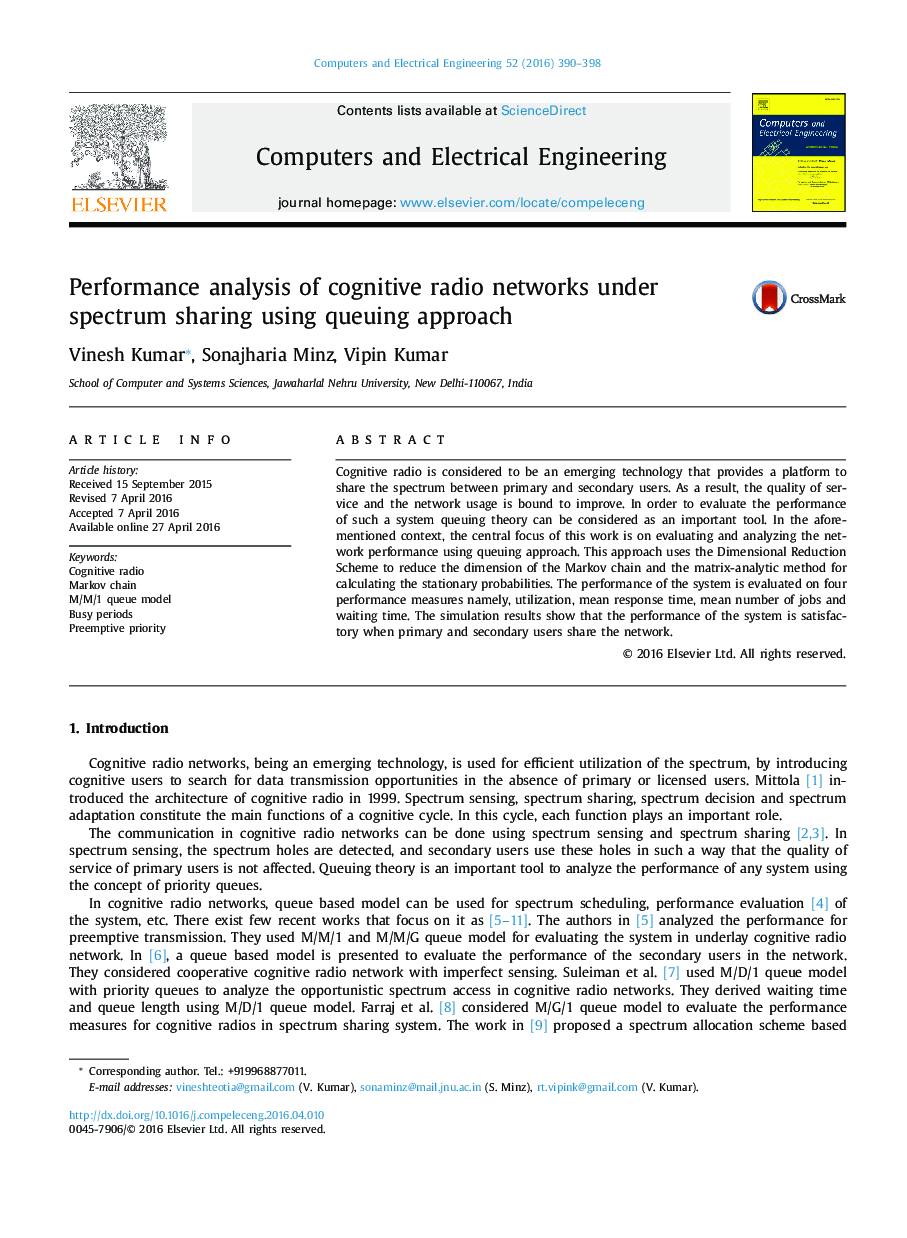| Article ID | Journal | Published Year | Pages | File Type |
|---|---|---|---|---|
| 453605 | Computers & Electrical Engineering | 2016 | 9 Pages |
•Cognitive radio network has been designed as two dimensional Markov chain.•Dimensional reduction scheme is used to reduce 2-D into 1-D Markov chain.•A matrix analytic method has been used to calculate the stationary probabilities.•Performance of the cognitive radio network has been found satisfactory.
Cognitive radio is considered to be an emerging technology that provides a platform to share the spectrum between primary and secondary users. As a result, the quality of service and the network usage is bound to improve. In order to evaluate the performance of such a system queuing theory can be considered as an important tool. In the aforementioned context, the central focus of this work is on evaluating and analyzing the network performance using queuing approach. This approach uses the Dimensional Reduction Scheme to reduce the dimension of the Markov chain and the matrix-analytic method for calculating the stationary probabilities. The performance of the system is evaluated on four performance measures namely, utilization, mean response time, mean number of jobs and waiting time. The simulation results show that the performance of the system is satisfactory when primary and secondary users share the network.
Graphical abstractFigure optionsDownload full-size imageDownload as PowerPoint slide
